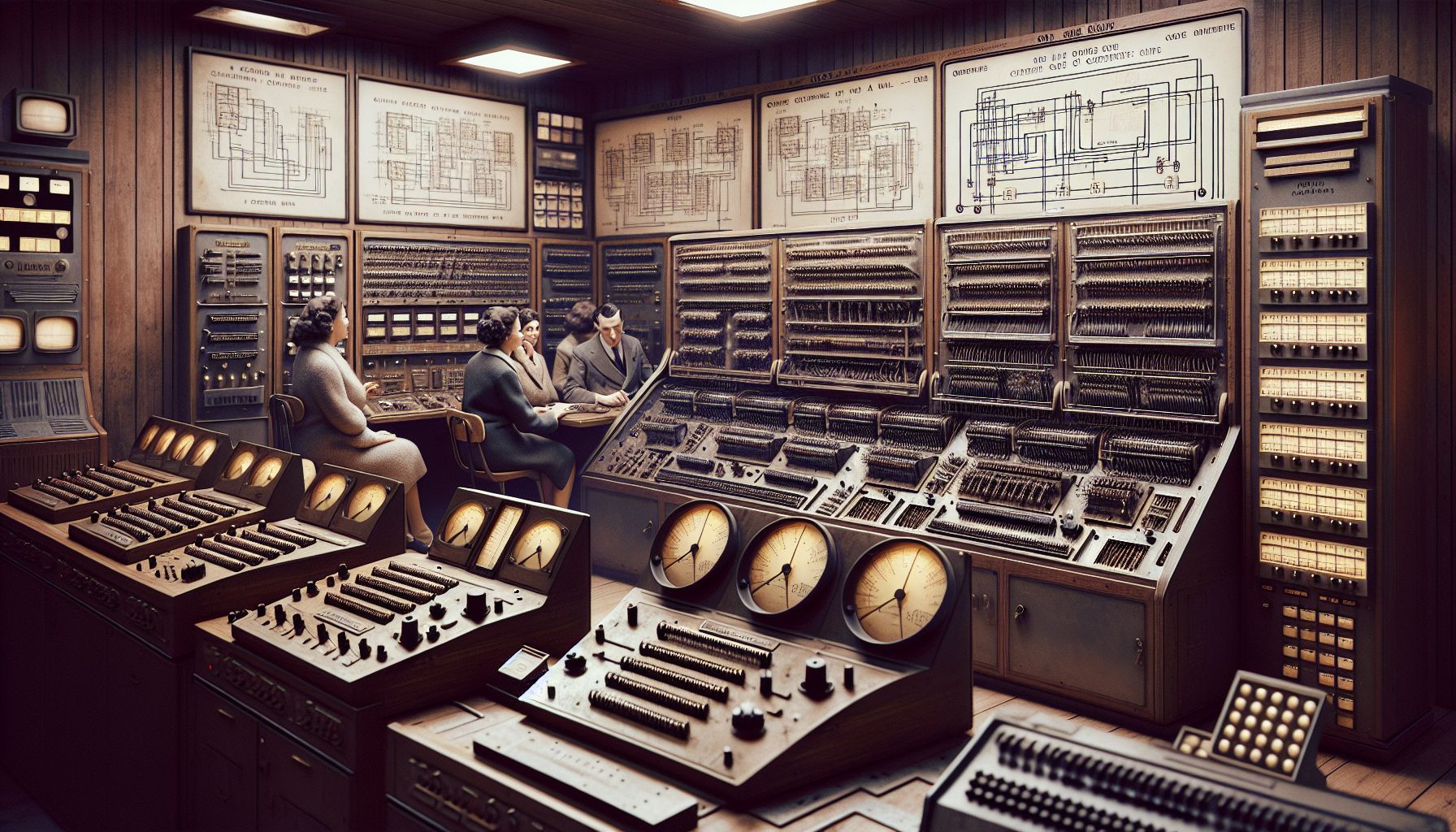📌 Let’s explore the topic in depth and see what insights we can uncover.
⚡ Dive into the world of tech history as we unravel the story of EDVAC - the machine that could remember, learn and transform the course of computing. 1949 saw the birth of the stored-program concept, one that still forms the backbone of every device you use today!
In the bustling landscape of the digital age, where smartphones and laptops have become as essential as our morning coffee, it’s hard to imagine a time when computing was an uncharted territory. One of the key milestones in this journey of discovery was the birth of the Electronic Discrete Variable Automatic Computer (EDVAC). The EDVAC, along with the inception of the stored-program concept, revolutionized the world of computing, laying the foundation for the technological marvels we witness today. In this blog post, we take a stroll back to 1949, delving into the mysteries of the EDVAC and the groundbreaking stored-program concept. We’ll explore the fascinating details of their creation, their impact on the digital world, and the legacy they’ve left behind. So, buckle up for a thrilling time travel expedition to the dawn of modern computing!
🎛️ The Birth of the EDVAC: A Game Changer in Computing

Diving into the Roots of Modern Computing: 1949 EDVAC
The EDVAC was a successor to the ENIAC, the world’s first general-purpose electronic computer, developed at the University of Pennsylvania during World War II. However, unlike its predecessor, the EDVAC was not a plug-and-play machine. Instead, it was designed to be a stored-program computer. Think of it as the difference between a piano that you must manually play and a player piano that can automatically play pre-programmed music. The EDVAC was a behemoth by today’s standards, occupying an entire room and boasting 1024 44-bit words of memory. Imagine trying to fit that into your backpack! It used binary, rather than decimal, representation of numbers, a feature that is now standard in all computers.
🧩 The Genius of the Stored-Program Concept
The stored-program concept, sometimes referred to as the Von Neumann Architecture, was a significant leap forward in computer design. This concept proposed that instructions for calculations and the data to be processed should be stored in the same memory. This was a radical shift from the separate storage model used in earlier computers, like the ENIAC, where instructions were hardwired into the machine. To illustrate, imagine a chef (the processor) in a kitchen (the computer). In the ENIAC model, the recipes (instructions) are tattooed on the chef’s arms, while the ingredients (data) are stored in the pantry. In contrast, in the stored-program model, both the recipes and ingredients are stored in the pantry. This allows the chef to modify the recipes based on the available ingredients, resulting in a more flexible and efficient kitchen. This concept of storing the program in the same memory as the data enabled the program to modify itself while running, opening up a world of possibilities for complex computations and algorithms.
🔍 The Masterminds Behind the Revolution
The EDVAC and the stored-program concept were born out of the genius minds of John Von Neumann, J. Presper Eckert, and John Mauchly. Von Neumann, a mathematician and physicist, is often credited with the development of the stored-program concept. However, Eckert and Mauchly, the creators of the ENIAC, also played significant roles in the evolution of the EDVAC. While the EDVAC was a collective effort, it was a draft report by Von Neumann that brought the machine and the stored-program concept to the attention of the wider scientific community. His report, “First Draft of a Report on the EDVAC,” not only described the design of the EDVAC but also detailed the stored-program concept, marking a turning point in computer architecture.
💡 The Impact and Legacy of the EDVAC and the Stored-Program Concept
We can’t overstate the impact of the EDVAC and the stored-program concept on the development of modern computing. They transformed computers from rigid, single-purpose machines to versatile, programmable devices. This shift in design philosophy paved the way for the development of the software industry and the birth of programming languages. The legacy of the EDVAC and the stored-program concept is apparent in every digital device we use today. From your laptop to your smartphone, and even your digital watch, they all owe a debt of gratitude to the EDVAC and the breakthrough concept of stored-programming.
🧭 Conclusion
The EDVAC and the stored-program concept were significant milestones on the road to the digital age. They not only revolutionized computer design but also shaped our entire technological landscape. As we marvel at the latest technological advancements, it’s important to remember the pioneering machines and concepts that laid the groundwork for these wonders. So, the next time you effortlessly switch between apps on your smartphone or run a complex algorithm on your computer, spare a thought for the EDVAC and the stored-program concept. These trailblazers of the computing world transformed the way we interact with technology, making our digital age possible. Indeed, they remind us that sometimes, to appreciate where we are, we need to revisit where we’ve been.
📡 The future is unfolding — don’t miss what’s next!
